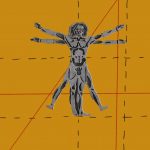Part 4: The (Racist) History of the BUPD
The strangest thing about the Boston University Police Department is how little of its inception is in public records.
The BUPD was formed in October of 1947, more than 100 years after BU’s founding in 1839, with 13 officers.
I was not able to receive more clarification on why it was formed, or any further information on its founding. The establishment of the BUPD is not even mentioned in Boston University’s official timeline.
The fact that BUPD was established in 1947 is somewhat of an anomaly. Campus policing as a whole was relatively rare prior to the late 1960s, and was mainly composed of maintenance workers and watchmen, with few exceptions.
The BUPD itself even confirmed this. In a strange fear-mongering 1982 article about how crime was invading “local ivy-covered walls,” then-BUPD Chief Paul Bates said the biggest crime when he started working for the BUPD in 1947 was male students stealing women’s underwear:
“The kids were just having a good time and we used to break up the raids without much trouble. We’d arrest a few for drinking too much or vandalism. But usually there was no serious crime. Campus cops in those days were more like watchmen and big brothers or fathers to the students than policemen.”
No wonder many think the BUPD is incapable of properly handling sexual assault on campus — they were birthed out of a department culture that thinks men stealing women’s personal property is a “good time.”
Campus police only began to be formalized and fully armed in the late 1960s, but this change is not linked to a sudden surge in crime.
There has always been crime on college campuses. John J. Sloan III, a criminology and sociology professor at the University of Alabama Birmingham, defined it in a Vox interview as “violence and vandalism and all the various things that happen when you put a bunch of relatively young people together in a relatively small space.”
It wasn’t until the late 1960s — a time of civil unrest and student activism — that most colleges instituted campus law enforcement agencies to better control their student populations. The International Association of Campus Police Administrators even admitted to this in their Frequently Asked Question section.
Campus police were established and empowered to restrain social activism throughout the student bodies of America.
Campus police were created to control students, not “crime.”
This is no less true for the BUPD. Though BUPD was established in 1947, police presence on campus definitely increased in the early 70s. In 1972, 33 student demonstrators were arrested for protesting military recruiters on campus.
In 1981, BU police arrested five Daily Free Press reporters for trespassing when trying to see the BU police log information regarding an alleged rape attempt.
Moreover, though BUPD is a privately owned law enforcement agency, it is not without its cases of police brutality and killer cops. In 1984, BU Police Sergeant Kevin Bourque shot and killed an unarmed 19-year-old named Christopher Dignan.
Bourque claimed he shot in self-defense because he was afraid Dignan would run him over. However, the angle at which the bullet struck Dignan indicated that Bourque was in fact standing to the side of Dignan’s car, and in no danger. No charges were filed.
Bourque’s brother, Richard, was also a police officer, but worked for the Boston Police Department. He killed a 14-year-old unarmed Black child named Levi Hart four years prior.
In 2002, Black graduate student Jason Hadnot said he had been victim to racial profiling after he was questioned by two BU police officers without cause — this was not an isolated incident.
A Boston Globe article reported that at that time, seven out of every 10 people stopped by BUPD were Black. This is despite the fact that less than 3 percent of BU’s student population identified as Black at the time.
The BUPD has avoided chances to provide more up-to-date data in regard to whom they are stopping on a day-to-day basis.
When these incidents of racial profiling were brought up to then-BUPD Chief Robert Shea, he suggested they take race out of their reports, and then fired the officers who brought this to his attention.
How’s that for “not all cops are bad”? All the “good” cops seem to be out of a job.
Three years later, in 2005, the fired officers — former deputy chief Enrico Cappuci and former officer Anthony Diori — sued BUPD for wrongful termination. They claimed they had been fired after confronting Shea on, according to the Globe, “attempting to steal BU property, engaging in nepotism, discriminating against women, and trying to hide evidence of racial profiling.”
Shea was reported to have a photo of a Black man getting choked by white hands on the sun visor of his car. When he was later questioned about it at a court deposition, he said his wife — Anne Shea, vice president of enrollment at BU at the time — “gets a kick out of it.”
The case was eventually dismissed because the court claimed Cappuci could not prove he was fired for illegitimate reasons. The ruling judge, however, admitted that “he reasonably, and in good faith, believed that BU and Shea were engaged in wrongful discrimination.”
The University didn’t even fire Shea — a man who carried around a horrific image of anti-Black violence because his wife got a “kick out of it” — after all of his racist acts were publicized. He chose to retire.
During the same school year, BU commemorated alum Martin Luther King Jr. with an honorary gathering and keynote lecture. How can the University promote Black lives and Black alumni when they are employing police who kill and racially profile people of color?
The history of the BUPD is clear, and its present actions are no different. We cannot allow for it to have a future. Abolish the BUPD.




